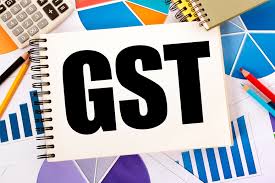GST bonanza for old gold jewellery buyers; now pay tax only on difference between purchasing, selling price
When it comes to day-to-day life, buying and selling old products is a common phenomenon. When any product is purchased, it is loaded with GST. When a business entity resells the same product after refurbishing, tax is again charged on the value, resulting in double taxation. To address this issue, GST Law has a provision known as the “Margin Scheme” that intends to resolve this anomaly. The margin scheme model applies to the person participating in the purchase and sale of second-hand commodities. In this scheme, GST is calculated on the difference between purchase value and re-sale price of used goods.
The question here is whether, in the case of the sale and purchase of used/second-hand jewellery, the application of GST should be limited to the difference between the selling and purchase price or would it be charged on the gross value?
This issue was raised by Aadhya Gold (P) Ltd. before the Karnataka Authority of Advance Ruling (“AAR”). In this case, where the applicant was engaged in buying used/second-hand gold jewellery from unregistered persons(“common man”). The applicant used to sell the used/second-hand gold jewellery which was purchased from the people, ‘as such’, without making any further processing. Such used gold ornaments were sold in the same form after cleaning and polishing but without altering the nature of the ornament.
Karnataka AAR observed that the applicant was not melting the jewellery to transform it to bullion and then recreating it into new jewellery, but rather cleaning and polishing the old jewellery without changing the nature or form of the jewellery purchased. Thereby AAR held that in this case, GST is payable only on the margin between the sale price and the purchase price.
This ruling will lead to a massive reduction in the GST payable on an item which is primarily considered as an investment in India. At present, the industry in general, is charging GST on the gross sale value received from the buyer irrespective of the underlying facts.
Understanding with an Example: ABC & Co., a jeweler has bought second-hand jewellery from an unregistered customer Mr. Z. amounting to Rs. 1000. ABC & Co. sells the same jewellery after cleaning and polishing for Rs. 1300. ABC & Co. will only be liable to pay GST on the difference between the purchase and sale price of used goods, which would be (1300-1000)=300.
Now coming to the industry practice. All of the big players essentially melt the old jewellery and use the molten metal to create new jewellery. As there has been a change in the form of the jewellery, this transaction does not qualify for Marginal Scheme. Thereby in such cases, the tax will practically be charged on the gross value unless the big players change the current practice.
However, small players in the industry, after purchasing second-hand jewellery for the purpose of reselling it, melt the jewellery and use the molten metal to create new jewelleries. After this ruling, mischievous dealers in the industry will melt their jewellery and use it to make new jewellery keeping the department in the dark, and continue paying tax under the Marginal Scheme. This will result in a significant loss for the department in the long run perspective.
Karnataka AAR, in the case of Attica Gold and Maharashtra Appellate Authority of Advance Ruling in the case of Safeset Agencies, has already approved the margin-based taxation regime for the jeweler industry.
Thereby these rulings will have a significant positive impact on the industry by lowering the tax cost to the final consumer. In a post-covid scenario, gems and jewellery sector has strong reason to rejoice and hope that this would bring back numerous customers to their doors.
Source:https://www.financialexpress.com/economy/gst-bonanza-for-old-gold-jewellery-buyers-now-pay-tax-only-on-difference-between-purchasing-selling-price/2292257/
Download our App to get knowledge updates::: https://play.google.com/store/apps/details?id=com.app.gstmitra
Join Our Telegram Channel for more updates:https://t.me/praveengst



Comments
Post a Comment